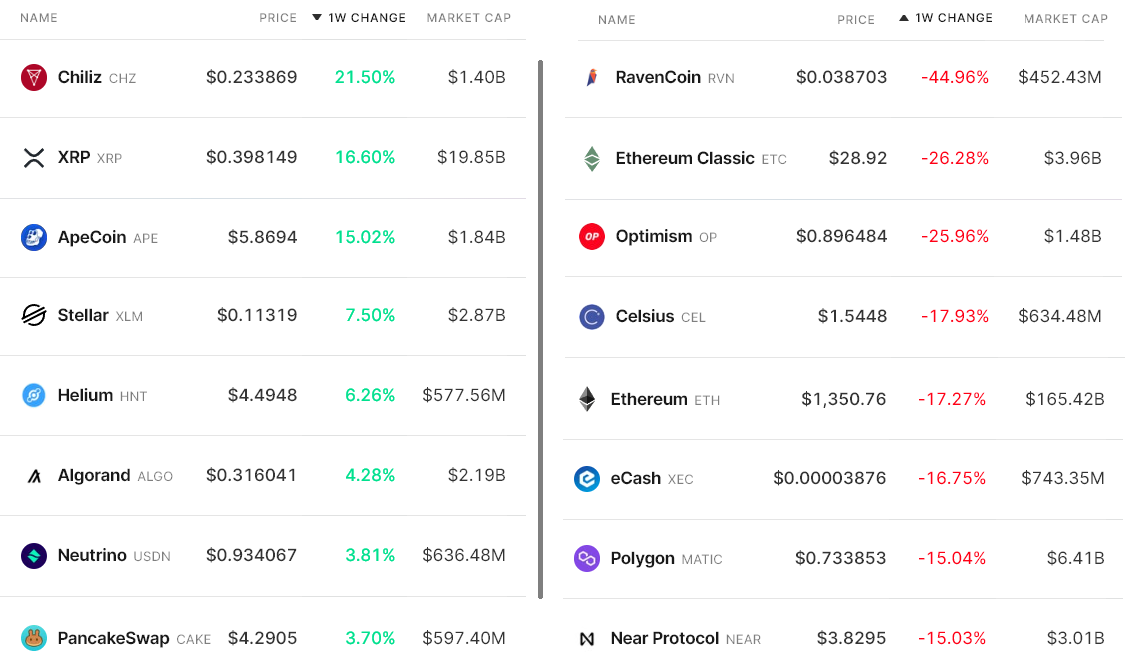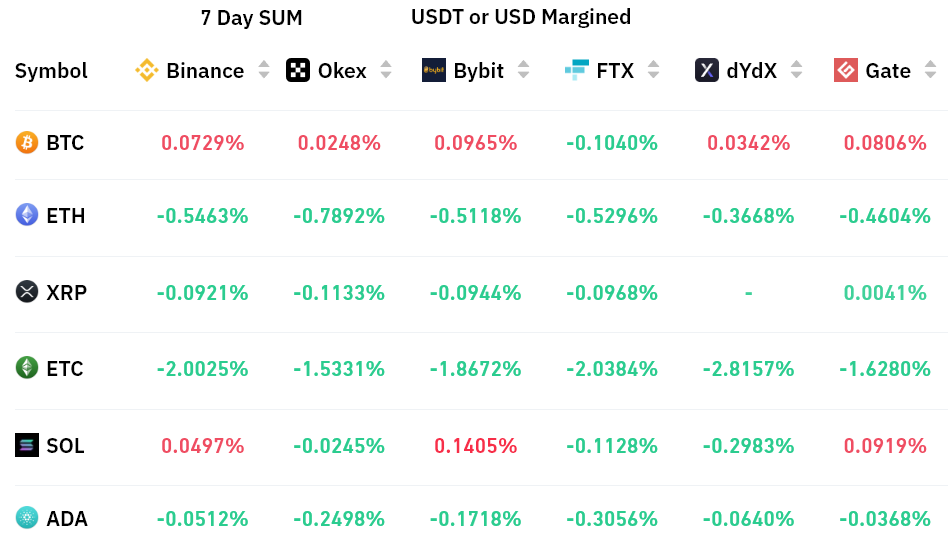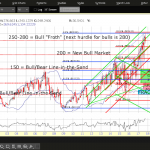Cryptocurrencies have been in a bear trend since mid-August after they failed to break above the $1.2 trillion market capitalization resistance. Even with the current bear trend and a brutal 25% correction, it has not been enough to break the 3-month-long ascending trend.
The crypto markets’ aggregate capitalization declined 7.2% to $920 billion in the 7 days leading to Sept. 21. Investors wanted to play it safe ahead of the Federal Open Markets Committee meeting, which decided to increase the interest rate by 0.75%.

Ether (ETH) also saw a 17.3% retrace during the 7-day period and many altcoins performed even worse. The Ethereum network Merge and its subsequent impact on other GPU-mineable coins caused some skewed results among the worst weekly performers.

XRP gained 16.6% after Ripple Labs called for a federal judge to immediately rule whether the company’s XRP token sales violated U.S. securities laws.
ApeCoin (APE) gained 15% as the community expects the staking program to launch, which shall be detailed by Horizen Labs on Sept. 22.
RavenCoin (RVN) and Ethereum Classic (ETC) retraced most of their gains from the previous week as investors realized the hashrate gains from Ethereum miners did not necessarily convert into higher adoption.
Traders’ appetite did not vanish despite the correction
The OKX Tether (USDT) premium is a good gauge of China-based crypto retail trader demand. It measures the difference between China-based peer-to-peer trades and the United States dollar.
Excessive buying demand tends to pressure the indicator above fair value at 100%, and during bearish markets, Tether’s market offer is flooded, causing a 4% or higher discount.

Perpetual contracts, also known as inverse swaps, have an embedded rate that is usually charged every eight hours. Exchanges use this fee to avoid exchange risk imbalances.
A positive funding rate indicates that longs (buyers) demand more leverage. However, the opposite situation occurs when shorts (sellers) require additional leverage, causing the funding rate to turn negative.

More importantly, Bitcoin’s funding rate held slightly positive during a week of price decline and potentially bearish news from the FED. Now that this critical decision has been made, investors tend to avoid placing new bets until some new data provides insights on how the economy adjusts.
Overall, the Tether premium and futures’ funding rate show no signs of stress, which is positive considering how badly crypto markets have performed.
The views and opinions expressed here are solely those of the author and do not necessarily reflect the views of Cointelegraph. Every investment and trading move involves risk. You should conduct your own research when making a decision.









Leave A Comment